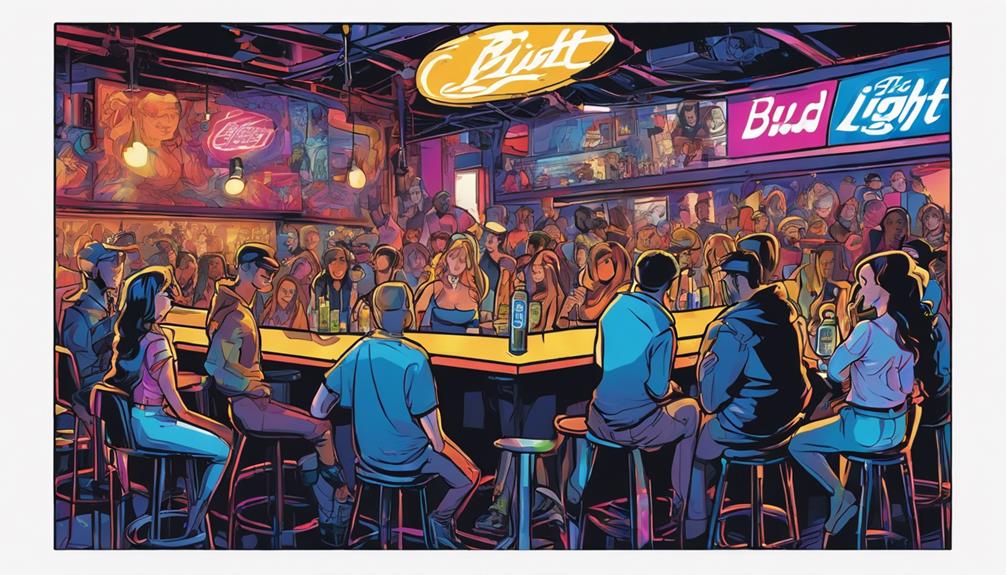Bud Light’s strong rebranding efforts are focused on appealing to millennials with a new, all-blue look that still pays homage to its roots. The updated design prioritizes authenticity in order to attract a younger audience that seeks unique experiences. However, changing consumer perceptions in a market dominated by craft breweries will be a challenging task. While the refreshed packaging improves visibility, there are still significant market obstacles to overcome. Success will hinge on effectively utilizing social media and innovative tactics to drive engagement. It will be interesting to see how these strategies unfold and impact Bud Light’s future. There is much more to learn about this dynamic shift and what it means for the brand.
Key Takeaways
- Bud Light's rebranding targets millennials with a fresh design, appealing to their preference for modern aesthetics and authenticity.
- The new nearly all-blue label and historic crest aim to enhance visibility and convey brand legacy, vital in a competitive market.
- Despite visual updates, overcoming skepticism towards large brands and establishing craft beer credibility remains a significant challenge.
- Leveraging social media and data analytics will be crucial for tailored marketing and engaging younger consumers effectively.
Overview of Bud Light's Rebranding

As Bud Light initiates a bold rebranding journey, it's aiming to resonate with millennial consumers while reinforcing its legacy in an increasingly competitive market.
The new label features a striking nearly all-blue color scheme paired with a historic crest, marking the first packaging update in eight years. This change reflects a shift towards modern branding, distancing itself from nostalgia.
While the brand generated $5.7 billion in off-premise sales in 2015, it faced a decline in sales volume over the past seven years.
With competitors, particularly craft beers, gaining traction, Bud Light's strategy seeks to balance appeal to younger drinkers and legacy loyalty, ensuring it remains relevant in a crowded marketplace.
Targeting the Millennial Consumer

Bud Light's rebranding strategy directly targets millennials by adopting a fresh design that aims to resonate with their preferences and lifestyle choices. The new packaging showcases a modern aesthetic that appeals to younger drinkers while attempting to maintain brand loyalty.
| Feature | Millennial Preference | Bud Light Strategy |
|---|---|---|
| Design | Clean and modern | All-blue color scheme |
| Authenticity | Value in tradition | Historical crest integration |
| Market Visibility | Stand out on shelves | Single-color branding |
Impact of Brand Perception
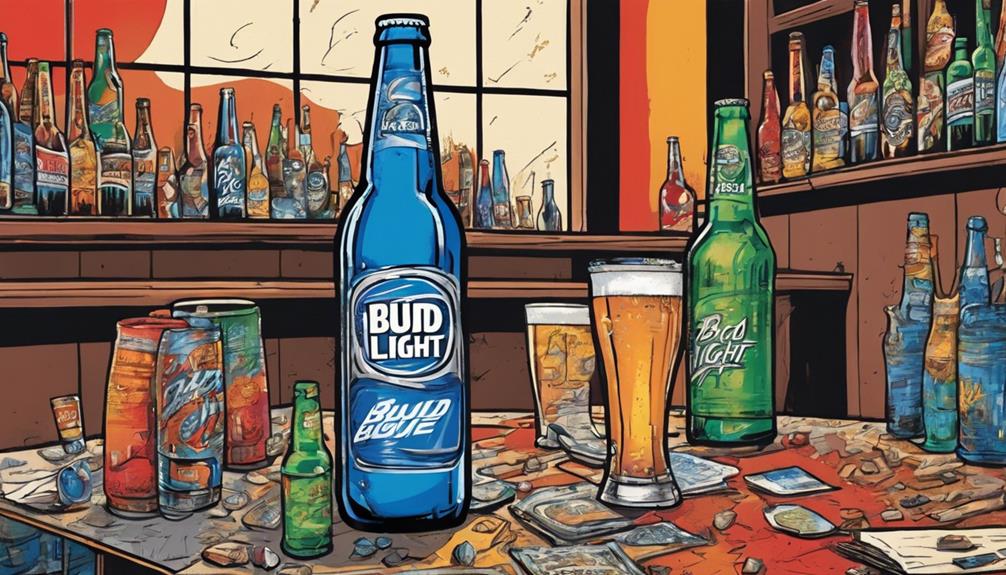
The rebranding efforts aim to reshape how consumers perceive Bud Light, especially in a market increasingly swayed by craft beer culture.
You might notice the bold new blue label and historic crest designed to enhance visibility and evoke a sense of legacy.
However, while these visual changes grab attention, they alone won't guarantee a shift in your perception.
Many consumers, particularly millennials, often switch between brands, driven by a preference for authenticity and unique flavors.
Bud Light's challenge lies in convincing you that it's more than just a mainstream choice.
If they can instill a sense of craft beer credibility, they may successfully alter your view and regain market share in this competitive landscape.
Market Challenges Faced
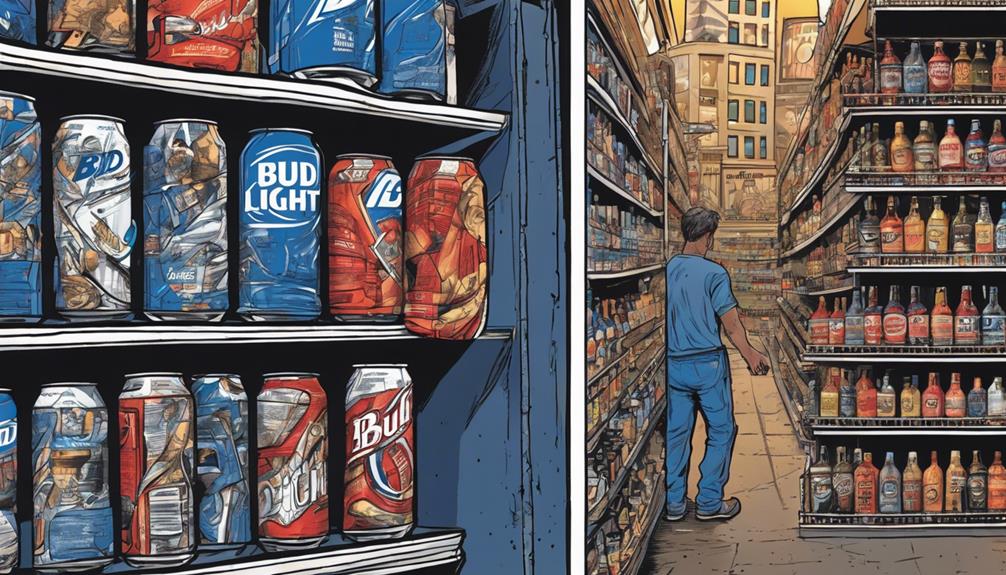
Market dynamics present significant hurdles for Bud Light, as shifting consumer preferences increasingly favor craft beers over mainstream options. You may notice that even with a fresh rebranding effort, simply changing the label won't automatically boost sales. Retailer sales have already declined, signaling deeper issues.
| Challenge | Impact |
|---|---|
| Declining Sales Volume | Bud Light lost market share in 2015 |
| Competition from Craft Beers | Increased consumer loyalty to local brews |
| Changing Consumer Preferences | Millennials are skeptical of large brands |
These challenges indicate that Bud Light must navigate a complex landscape. If it wants to reclaim its status, it'll need more than a new look; it needs a robust strategy that resonates with current drinkers.
Strategies for Effective Growth
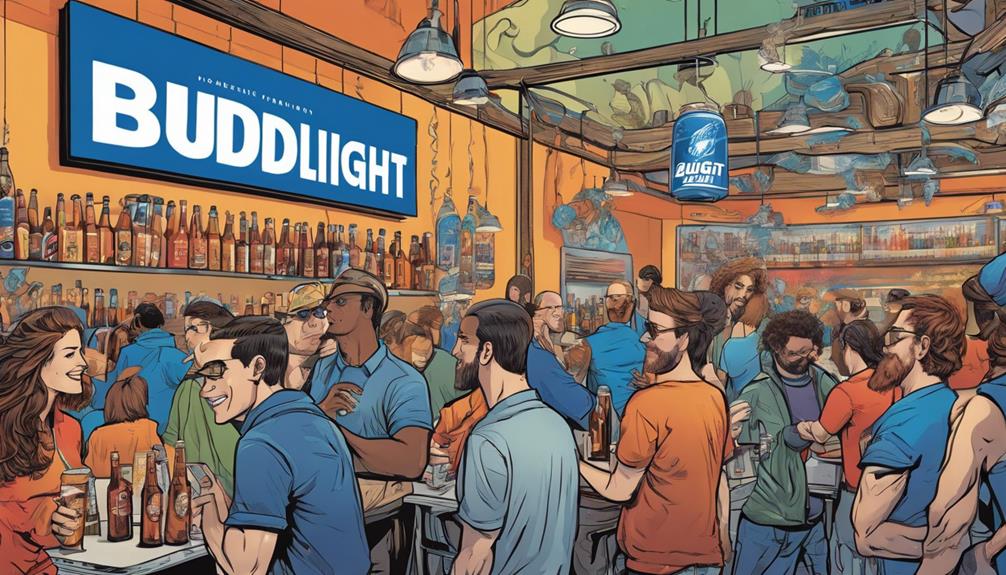
Reevaluating your approach to brand engagement can position Bud Light for effective growth in a competitive landscape.
To capture millennial interest, you should leverage social media platforms for targeted campaigns that resonate with this demographic.
Using data analytics allows you to track consumer behavior and preferences, helping you refine your messaging.
Implement referral programs to encourage brand sharing among friends and family, creating a sense of community around Bud Light.
Additionally, content marketing can engage potential customers through storytelling that highlights the brand's heritage and authenticity.
Experiment with various formats, like video and interactive posts, to keep your audience engaged.
Role of Technology in Branding
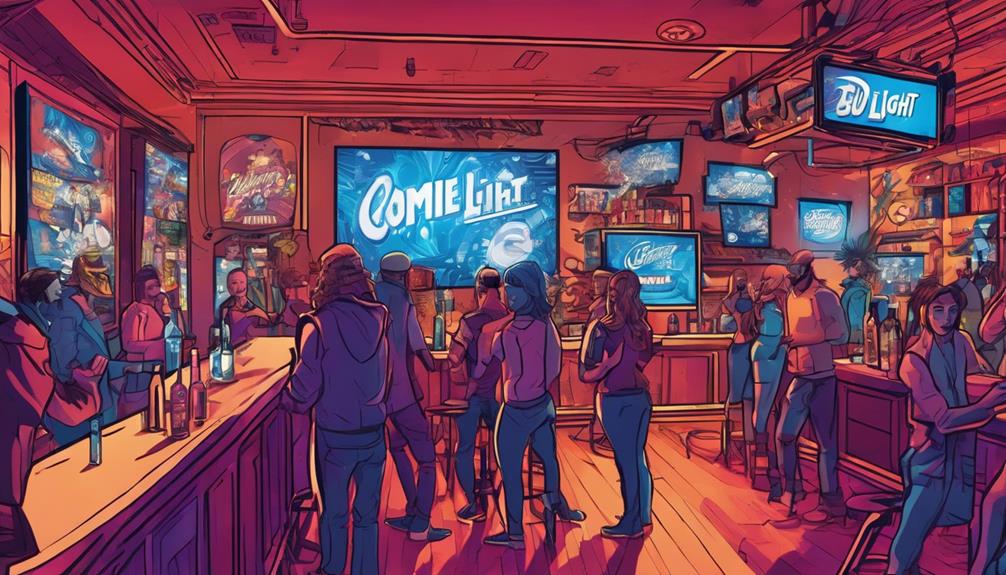
In today's digital landscape, leveraging technology is essential for Bud Light to enhance its branding efforts and connect with consumers effectively.
You can utilize social media platforms to engage directly with your audience, creating interactive campaigns that resonate with millennials. Data analytics allows you to track consumer behavior and preferences, enabling targeted marketing that feels personal.
By embracing innovative technologies, like augmented reality packaging or immersive experiences, you can make your brand stand out. Additionally, utilizing online feedback tools gives you real-time insights into consumer sentiment, helping you adjust strategies promptly.
Ultimately, integrating technology into your branding approach not only fosters a stronger connection with consumers but also positions Bud Light as a forward-thinking brand in a competitive market.
Future Outlook for Bud Light
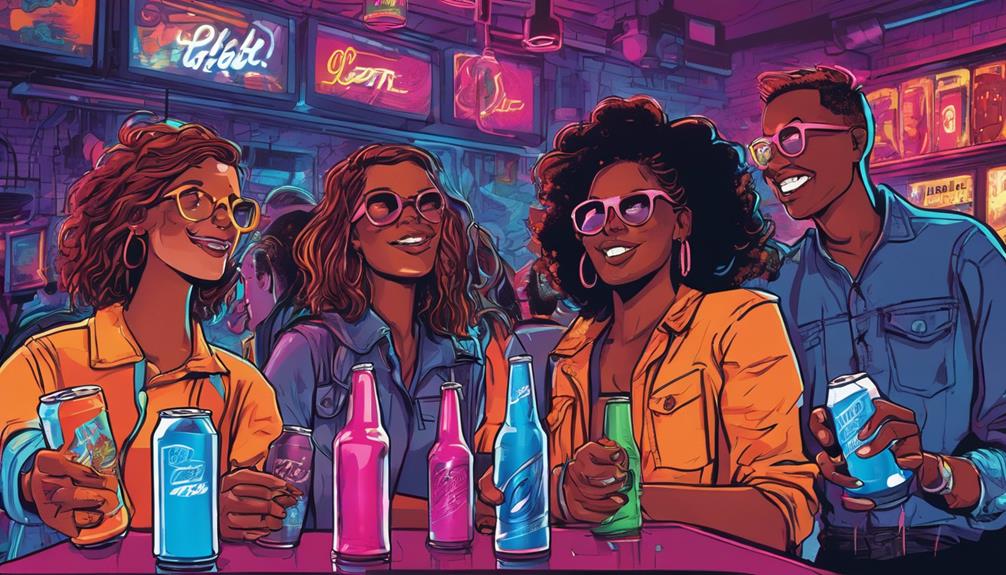
Bud Light faces a challenging yet promising future as it seeks to redefine its brand and regain market share amidst shifting consumer preferences.
You'll notice that the new label aims to attract younger drinkers while honoring its legacy. However, this rebranding alone mightn't be enough.
The craft beer movement continues to grow, and many consumers are skeptical of large brands. To truly bounce back, Bud Light needs to engage with its audience more deeply through innovative marketing and community involvement.
If you keep an eye on their strategies, you might see them embrace new flavors or collaborations.
Ultimately, their success will depend on adapting to the evolving tastes of consumers while maintaining authenticity and quality.
Frequently Asked Questions
How Will Bud Light's Rebranding Affect Its Current Customer Base?
Rebranding will likely shift your perception of Bud Light, appealing more to younger consumers while trying to retain legacy drinkers. You might find the new design invigorating, but it won't guarantee loyalty or sales improvements.
What Specific Marketing Tactics Will Accompany the New Label Launch?
When you reveal a new label, it's like opening a fresh chapter. Expect targeted social media campaigns, influencer partnerships, and eye-catching promotions that engage consumers, ensuring your brand stands out in a crowded marketplace.
Are There Any Partnerships Planned to Promote the Rebranding?
You'll likely see partnerships with influencers and events to promote the rebranding. Collaborations with popular music festivals or craft breweries might help attract younger consumers and enhance Bud Light's visibility in crowded markets.
How Does Bud Light Plan to Measure the Success of Its New Branding?
Bud Light plans to measure the success of its new branding through sales data analysis, consumer feedback, and market share changes. They'll track shifts in customer perception and engagement across various demographics to gauge effectiveness.
What Are Competitors' Responses to Bud Light's Rebranding Efforts?
Competitors are likely analyzing your rebranding closely, adjusting their strategies to capitalize on any weaknesses they perceive. They might enhance their marketing efforts or introduce new flavors to attract consumers away from your brand.
Can Pinterest Management Help Boost Bud Light’s Rebranding Efforts?
Bud Light’s rebranding efforts can definitely benefit from the power of pinterest management. With strategic use of Pinterest, Bud Light can showcase their new image, reach a wider audience, and engage with potential customers in a visually appealing way. Pinterest management can help boost Bud Light’s rebranding success.
Conclusion
In this ever-changing landscape of beer preferences, Bud Light's rebranding is like a revitalizing breeze on a warm summer day.
By embracing a modern look while nodding to its storied past, it aims to charm millennials who crave something authentic.
However, steering through the stormy seas of consumer skepticism and craft beer competition won't be a walk in the park.
If Bud Light can strike the right chord, it might just find its way back into the hearts of today's discerning drinkers.
